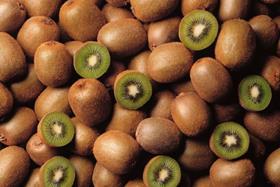
The Chilean Kiwifruit Committee has announced in a press release that exports of Hayward kiwifruit from the nation will total 175,000 tonnes in 2011, down 5 per cent on the 185,000 tonnes originally estimated.
The Committee said the contraction is due to a lower availability of fruit as a result of frosts, which occurred mainly in the VII Region, as well as an important reduction in the volume of fruit in adult orchards.
However, the quality of Chilean kiwifruit exports this season is said to be good.
“The quality and dry matter of the fruit for aging are better than last season,”the association explained. “Consequently, there are good expectations that the fruit being delivered to the market will be well received.”
To date, the markets with the biggest decline in volume against last season are North America (whose arrivals have fallen by 17 per cent) and Europe (where imports have declined by 11 per cent), according to figures reported by the Chilean Fresh Fruit Exporters Association (Asoex).
Despite the export decline, the North American market has shown positive pricing trends on average, in comparison to the previous season.
“The lower quantity of kiwifruit from New Zealand and Chile has translated into a North American market with stable and reasonable prices,” explained Ricardo González, marketing manager for Copefrut.
The fall in Europe has also helped Chile to garner better price stability.
“In previous seasons we used to export significant volumes as a result of market pressure and rapid sales, but in the long term, this leads to price reductions,” added Mr González.
Carlos Cruzat, general manager of the Chilean Kiwifruit Committee, indicates that at present Spain is the country with the most significant decline in Chilean kiwifruit arrivals, with volume to date down by 35 per cent, compared with the same point last season, followed by Italy (-25 per cent).
In Asia, Mr González believes the Committee’s most important challenge is to compete with a higher quality product in terms of taste and appearance in order to gain a position in a market that historically has been dominated by New Zealand.
Meanwhile in Latin America, exports of Chilean kiwifruit to date remain stable in comparison with last season.



